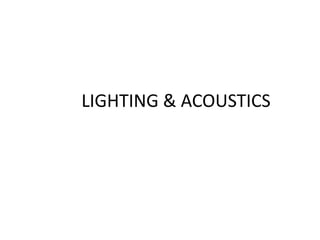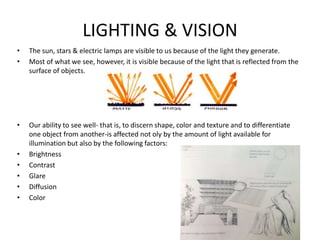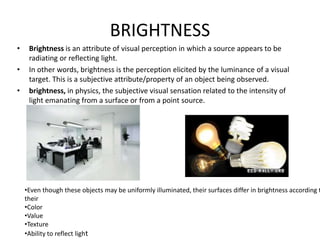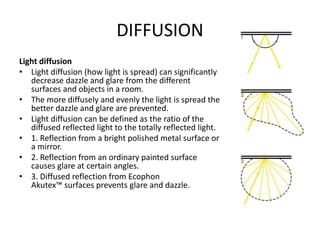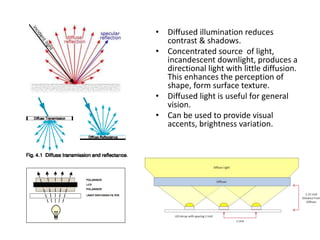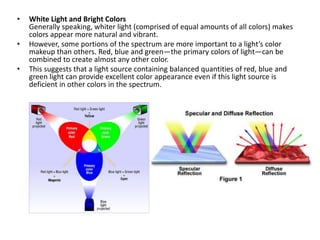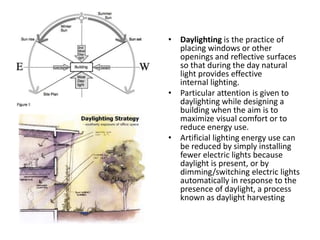The document discusses various aspects of lighting and acoustics. It begins by defining light and its role in vision. It then discusses factors that affect vision like brightness, contrast, glare, diffusion, and color. It explains these concepts in more detail and provides examples. The document also covers daylighting and how natural light can effectively provide interior lighting when windows and reflective surfaces are placed strategically. Overall it provides an overview of key lighting and acoustics concepts.
